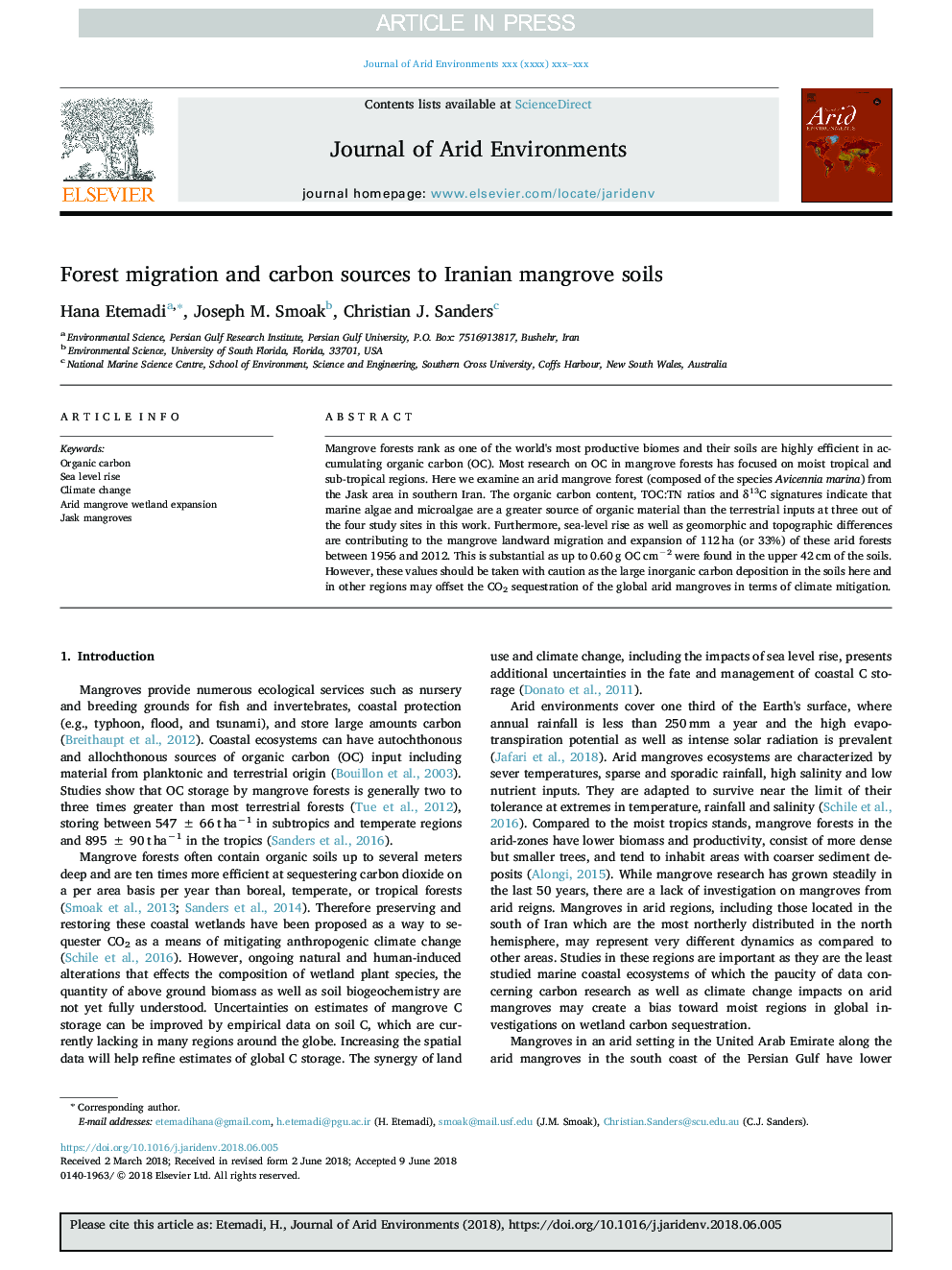| Article ID | Journal | Published Year | Pages | File Type |
|---|---|---|---|---|
| 8848436 | Journal of Arid Environments | 2018 | 9 Pages |
Abstract
Mangrove forests rank as one of the world's most productive biomes and their soils are highly efficient in accumulating organic carbon (OC). Most research on OC in mangrove forests has focused on moist tropical and sub-tropical regions. Here we examine an arid mangrove forest (composed of the species Avicennia marina) from the Jask area in southern Iran. The organic carbon content, TOC:TN ratios and δ13C signatures indicate that marine algae and microalgae are a greater source of organic material than the terrestrial inputs at three out of the four study sites in this work. Furthermore, sea-level rise as well as geomorphic and topographic differences are contributing to the mangrove landward migration and expansion of 112â¯ha (or 33%) of these arid forests between 1956 and 2012. This is substantial as up to 0.60â¯g OC cmâ2 were found in the upper 42â¯cm of the soils. However, these values should be taken with caution as the large inorganic carbon deposition in the soils here and in other regions may offset the CO2 sequestration of the global arid mangroves in terms of climate mitigation.
Related Topics
Physical Sciences and Engineering
Earth and Planetary Sciences
Earth-Surface Processes
Authors
Hana Etemadi, Joseph M. Smoak, Christian J. Sanders,
